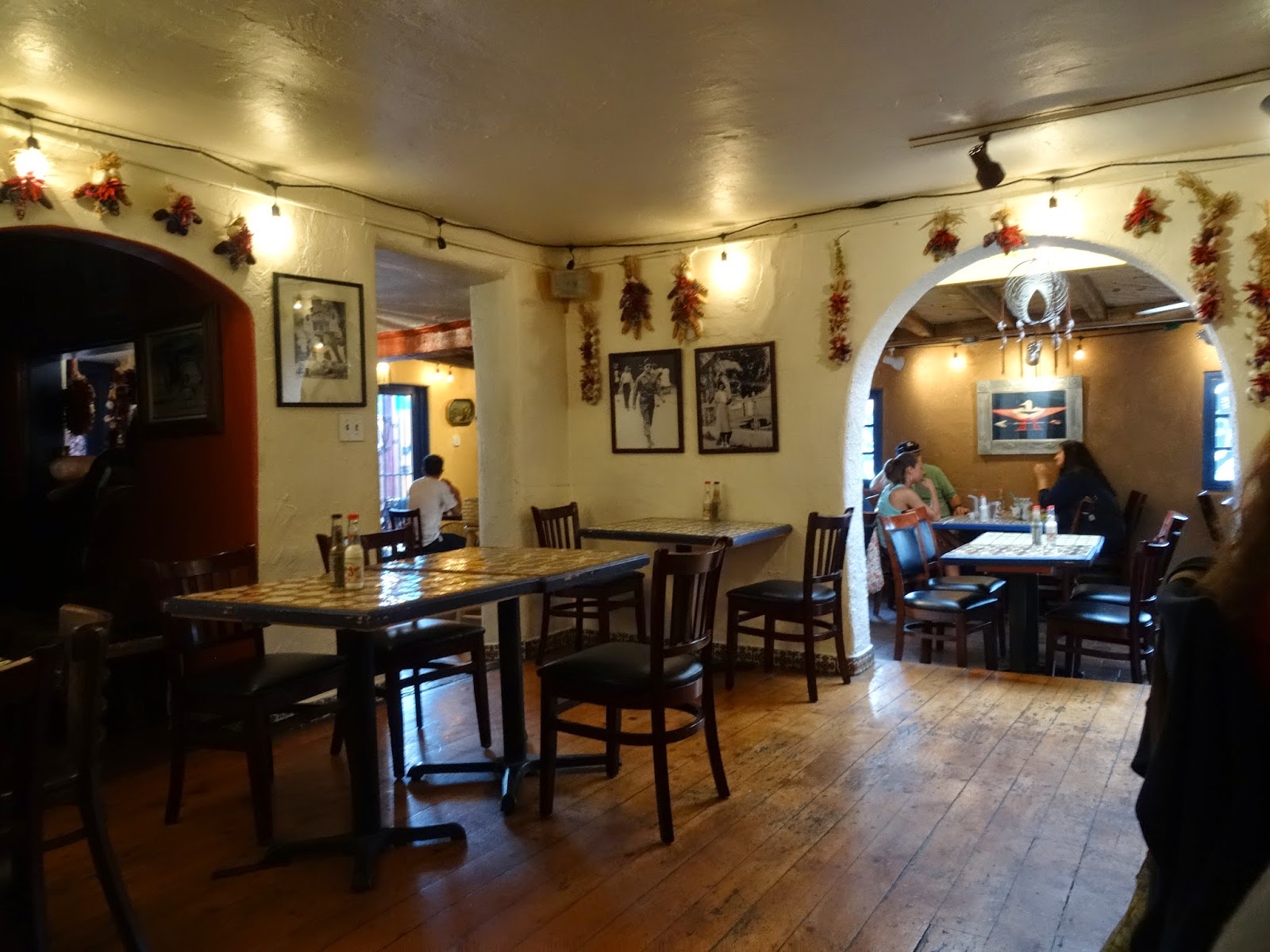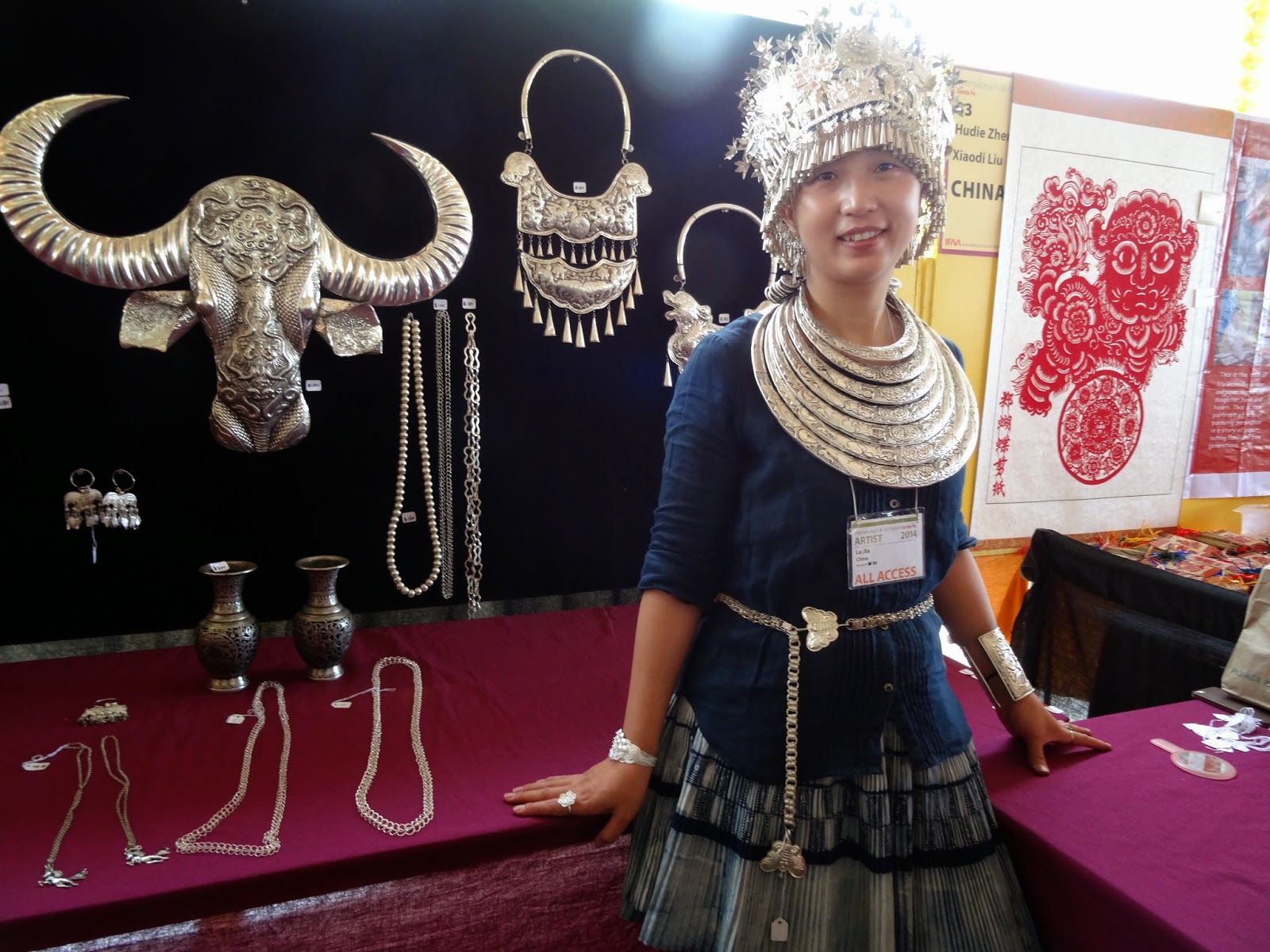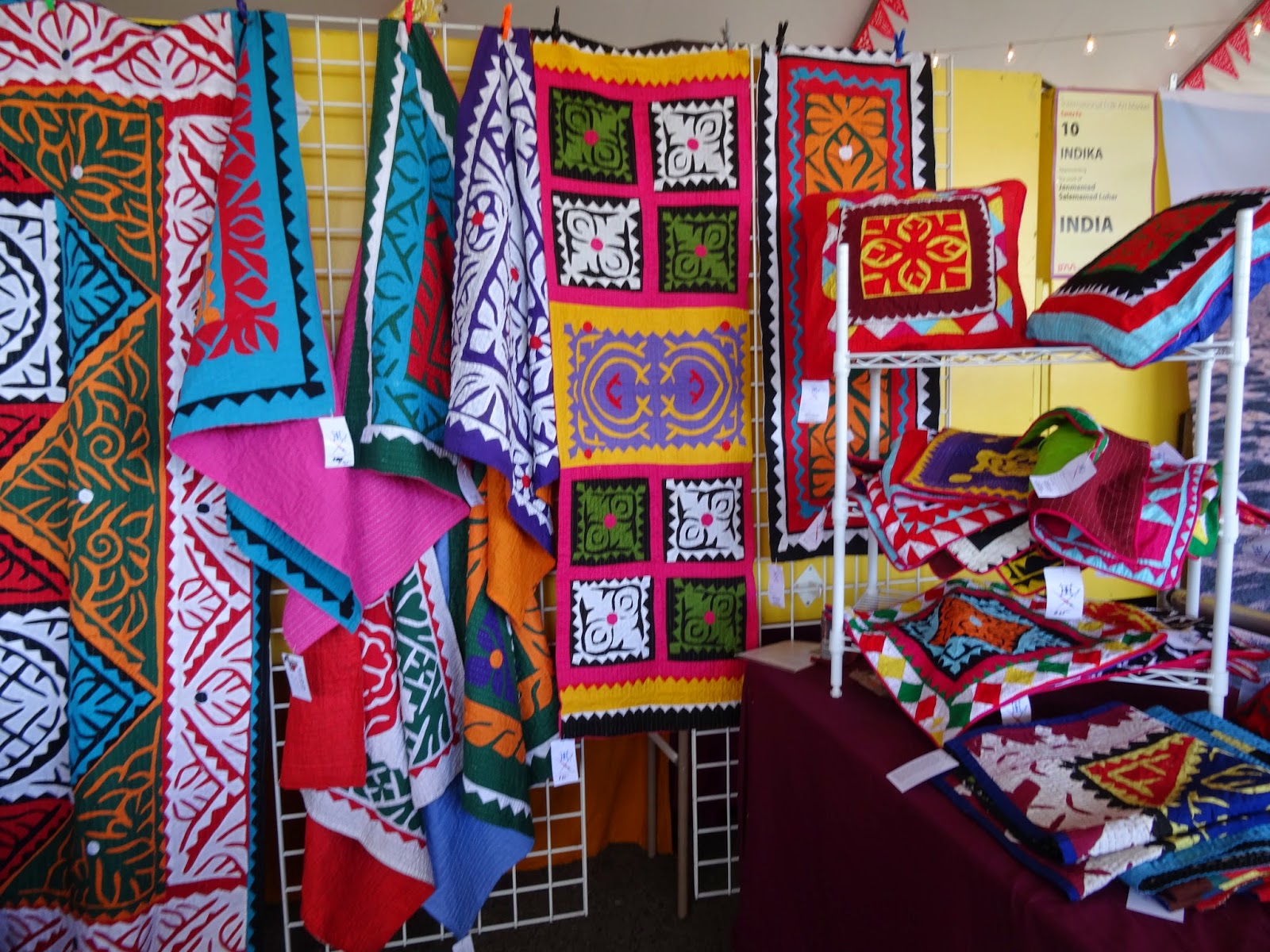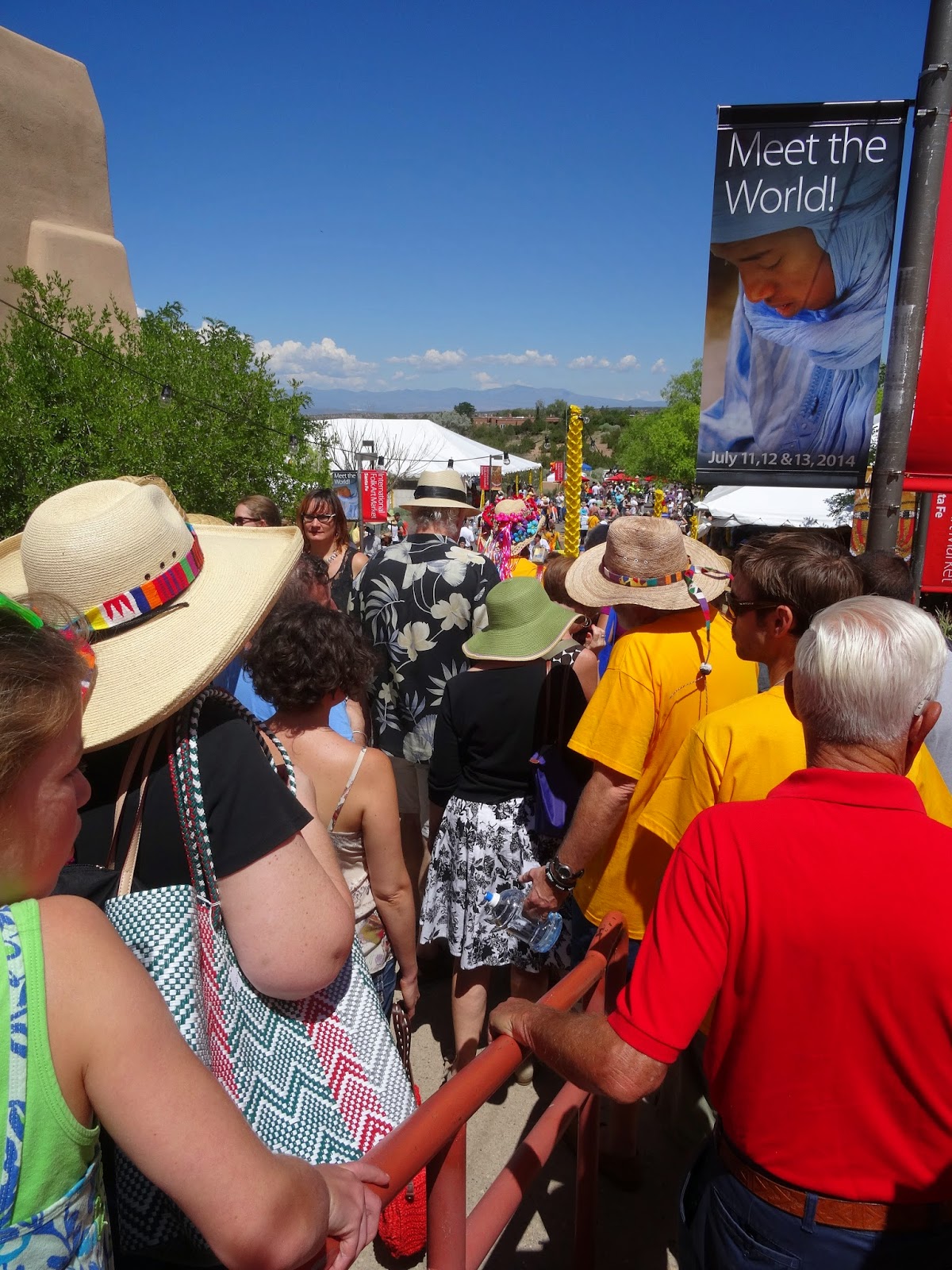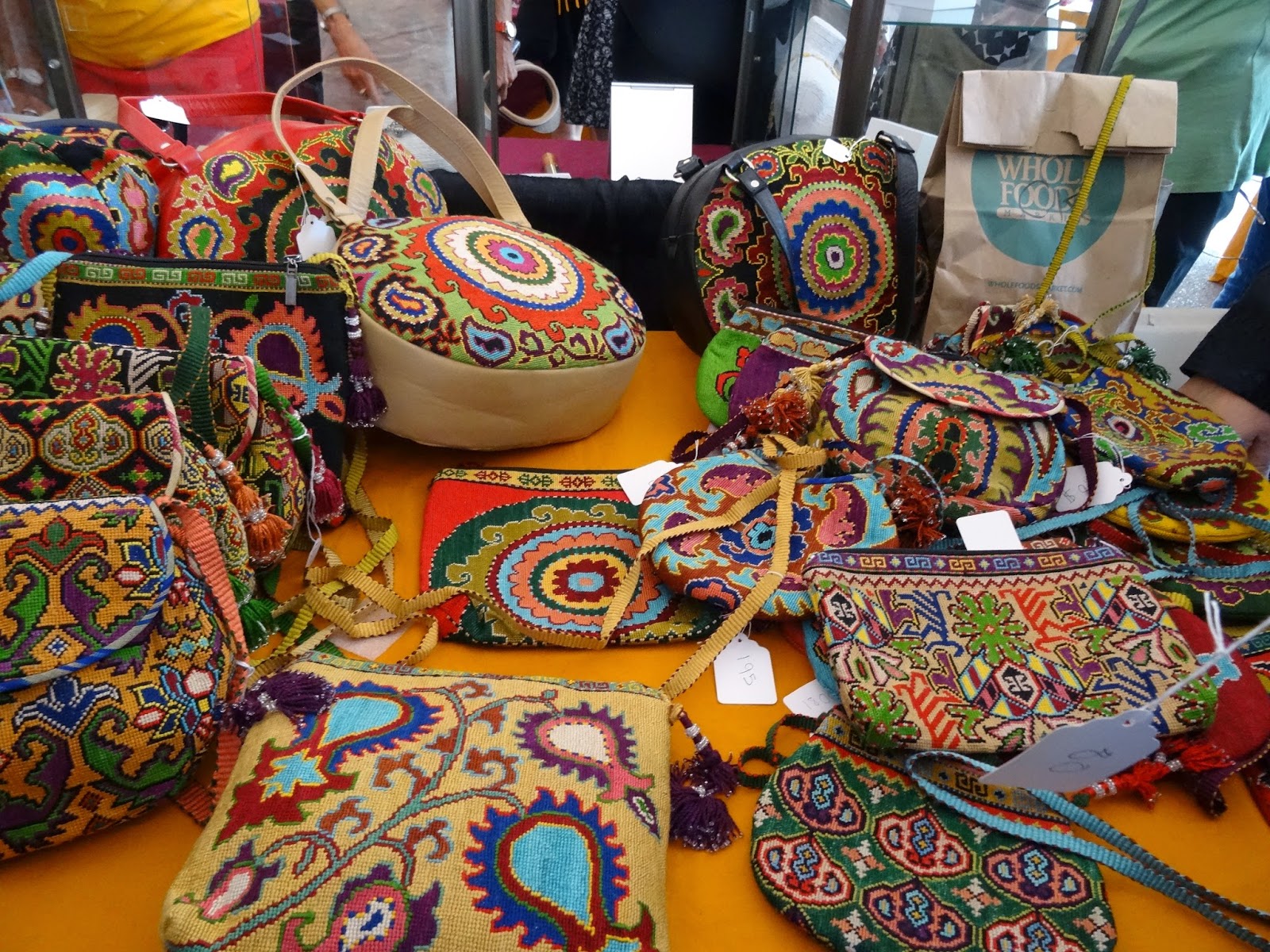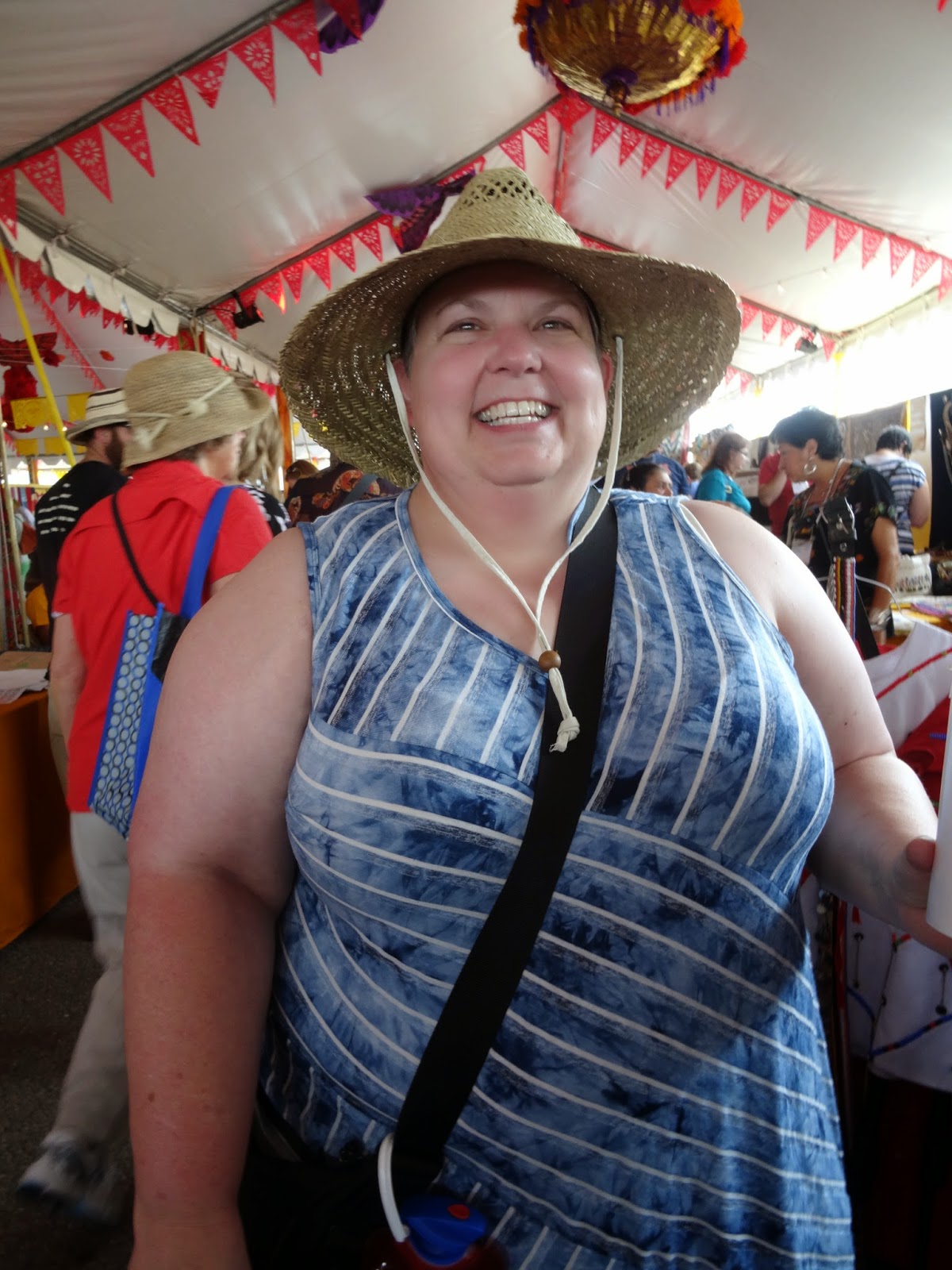Seen on the streets of Santa Fe, above and below
The Folk Art Extravaganza, along with offering two full days at the International Folk Art Market, also provided participants with professional development experience, and if you wanted/needed, you could leave with a certificate for 44 hours of professional development credit! As a retiree, I didn't have need for it, but hallelujah for those young 'uns who did!! |
| Was it black and white night for dining? That's me on the right. |
Our first and last full days in Santa Fe were spent in classroom activity, which included time for two hands-on projects (I completed one of the two), discussion, and visits from artists (and/or their representatives) from the Folk Art Market. Both days ended with fun group dinners at terrific restaurants.
Casa Chimayo (above) where we had our first group dinner
And at Andiamo (below) for our final group dinner
Ole! (They'd watched flamenco dancing the prior night)
Above, on the left is group leader/Crizmac president Stevie Mack
And below, left, is group leader/School Arts editor Nancy Walkup
Some of our group, strolling to the plaza after dinner (below).
So I traveled to Santa Fe independently, as did the majority of the participants in the group, which meant that we all got to know each other quickly and were never left to fend for ourselves alone (unless we wanted to be alone!). Given the resources and opportunity, I would definitely consider traveling with Crizmac again. (Uh oh, I guess I'd better mail in my evaluation form soon!)I worked on it extensively in the evenings as well as the classroom time, and it is done! I like it so much, I'm going to sew it on a backing and frame it, I think. I took photos of some of the projects other participants made, but evidently I deleted them by mistake and can't locate a single photo! Sorry!
The real highlight of those classroom days was the visitors who came to see us. On the first day, we had a visit from an American woman representing Lila Handicrafts, a cooperative of Pakistani ralli quilters. She brought a lot to show us, and went into detail about their work and the providence that brought her together with them. She even brought some unfinished bags with her, and sold them to us at very reasonable prices. We also were given some quilt scraps and leftover tassels. I bought a bag that needed a handle and a closure, and when I got home, I was able to use the quilt scraps to make a coordinating strap which I sewed in place. I then added a Velcro closure, and then sewed the tassels over the Velcro. I'm very happy with my unique completed piece, pictured below.
I must say, the work in their booth at the Market definitely was some of the most unique and exquisite I saw. Here's some of what she brought with her to show us. I appreciated the close-up view of the intricate workmanship. I was hoping to find an authentic mola at the Market, but there were none; however these quilts were closer to molas than anything else I saw at the festival. Look closely at this series of photos below. This is ALL hand-stitching. Remarkable!
Then, on our last day, we had three groups of visitors.
First was Augustin Cruz Prudencio from Oaxaca Mexico. He and his brother came and shared their carved and painted animals and figures, demonstrated their tools, and spoke about their craft. Stevie translated for them! A little anteater I purchased was made by them.
And Manuel Abeiro Horta Ramos and brother brought their amazing carved and painted dance masks and other decorative masks. (I bought the owl with snakes pictured below). Their American representative spoke for them and shared their work.
But the most engaging of them all was Huichol yarn painter Cilau Valadez and his father Mariano Valadez. (We all thought Cilau was pretty cute, too!)
Their work is beyond stunning, and each piece incorporates spiritual themes. Cilau's mother is an American anthropologist, and as a result, he has dual citizenship and speaks fluent English, having spent some years of schooling in the US. They are renowned for their work and have had shows worldwide. Cilau called himself a 'bridge', sharing about and advocating for the preservation of his traditional culture as he travels and speaks around the world. He employs apprentices in his workshop and is instrumental at getting some of his people out of the tobacco fields by training them in the traditional arts. Unfortunately I was not able to purchase a piece of their magnificent work.
The gorgeous beadwork (below) is done by some of the women in their workshop.
I've been asked what I bought at the International Folk Art Festival. I believe I probably spent a lot less than most of the others in our group, but that's just me. I'm generally a pretty frugal shopper. Several things I was specifically hoping to find were not represented. These were folk art items that had appeared in favorite lessons that I had taught over the years. I wanted to bring home an authentic sample of, as I previously said, a mola from the Cuna Indians (from islands off the coast of Panama), and also a piece of amate bark painting from Mexico, an aboriginal bark painting from Australia, and a daruma doll (a bringer of good luck) from Japan. And possibly something from New Zealand featuring the koru, or unfurling spiral symbol. No luck, unfortunately.But I did buy a number of small items, some of which I previously mentioned and are in the photo above. My purchases included a lovely woven scarf made by a woman from Ecuador (the rich blue in the upper left corner), a red carved gourd ornament for my husband from Peru, a tiny Oaxacan carved and painted anteater, a small carved mask from Mexico that now hangs in our camp (not in photo), a pretty Yemenite silver ring from Israel (not in photo), a hand dyed bag, dyed with the 'ikat' process (not in photo) and a luscious hand died spun silk scarf (the turquoise and white 'cloud' scarf under the other objects) from Uzbekistan, a bracelet from South Africa made from telephone wire (yellow and purple), and some small woven bracelets from palm fronds (front right) made in Colombia.
Wow. After all these photos, and three posts, I realize that I haven't even talked about or shown you photos from the Museum of International Folk Arts, which is simply fabulous. Another post, another time....






